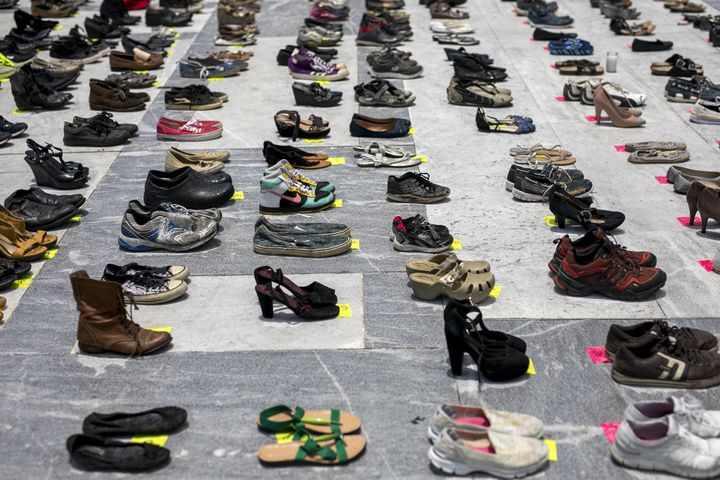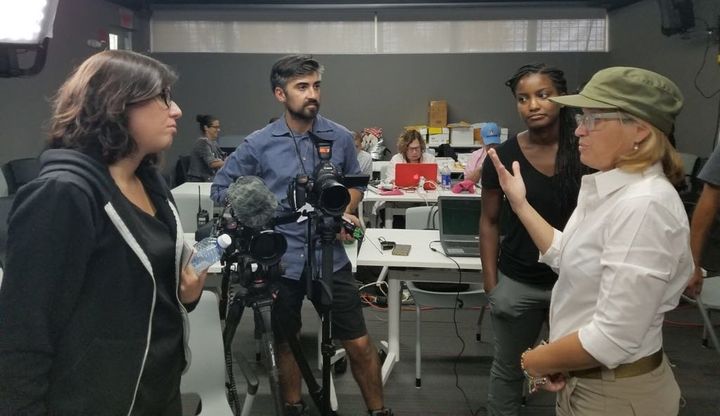
Today I was supposed to write about how children in Puerto Rico are still struggling to overcome the trauma of Hurricane Maria, their lives completely changed by the loved ones they lost and the destruction they faced in the aftermath of the storm.
It’s a story I’ve been working on for weeks, along with several others, ahead of the one-year anniversary of Hurricane Maria making landfall on Sept. 20, 2017. It’s also a story I had to push aside Thursday morning as President Donald Trump denied via Twitter that close to 3,000 people died in Puerto Rico after the storm, despite an independent analysis by researchers at George Washington University showing otherwise. He then went on to accuse Democrats of making up the number so that he would look bad.
I know the latter to be false precisely because I’ve spoken to many of the people responsible for that and similar studies, all of which came to similar conclusions. Different sets of researchers examined the public data in depth, interviewed people on the island and closely analyzed patterns of death. I talked to them again today.
“To dispute those figures at this point is an insult to our intelligence.”
- Dr. Domingo J. Marqués, one of the lead authors of the Harvard study
“We do science and work with facts. By now we have over four studies that put the death total over the thousands,” Dr. Domingo J. Marqués, associate professor of clinical psychology and director of the dialectical behavioral research and therapy program at Albizu University in San Juan, said via email.
Marqués was one of the lead authors in a Harvard study, published in May, which also found a death toll in the thousands.
“All the experts agree that the number of 64 is not real,” he said, referencing the Puerto Rican government’s official hurricane death count before the GWU study. “To dispute those figures at this point is an insult to our intelligence.”
Researchers at GWU’s Milken Institute School of Public Health, whose specific study Trump denied, released a statement later on Thursday defending their finding. “We stand by the science underlying our study which found there were an estimated 2,975 excess deaths in Puerto Rico after Hurricane Maria,” they wrote.
Dr. Rafael Irizarry, a professor of biostatistics who was also part of the Harvard study, chimed in. “It’s not just the GWU and Harvard studies, multiple independent analyses based on publicly available data have confirmed the high death toll in Puerto Rico after Hurricane Maria,” he told HuffPost. “Our most recent examination of these data finds that excess deaths continued for months after the hurricane, and largely occurred due to delayed or prevented access to medical care.”

This is a topic that hits close for me. Three weeks after Maria, a HuffPost producer, a cameraman and I traveled to Puerto Rico and experienced a glimpse of what life was like there for millions after the storm.
The San Juan apartment we stayed in had no power and no water. Without a working elevator, we climbed ― with our equipment ― 10 flights of stairs morning and night. Every time we needed to use the bathroom, we had to descend 10 stories and wait in line at a nearby store.
Things were further complicated because I arrived on the island with a cold, which quickly turned into a respiratory infection that landed me in a makeshift emergency room at a San Juan shelter. I was still sick when I returned to the mainland, driving my primary doctor to prescribe a second round of antibiotics for what she concluded was walking pneumonia.
But unlike the millions of Puerto Ricans who either couldn’t physically leave the island or didn’t have the resources to do so, I was able to get the help I needed back in the mainland. I’m not sure how I would have fared without that second round of antibiotics and a change in environment. After all, the Harvard study found that the increase in deaths after the storm was mostly a result of the interruption of medical care.
“Time and again, newsrooms are forced to use their limited and valuable manpower to fact-check and reject statements made by the president via Twitter. It takes us away from covering the people actually affected by his policies.”
Last month, I returned to Puerto Rico to follow up on recovery efforts. And today I really wanted to stay focused on telling stories about the ongoing issues on the island post-Maria. But instead I’m writing this ― fact-checking the president and pointing out a big problem that journalists face in the age of Trump.
Time and again, newsrooms are forced to use their limited and valuable manpower to fact-check and reject statements made by the president via Twitter. It takes us away from covering the people actually affected by his policies.
It’s a twisted trick of misdirection that has real-life repercussions. Last year, as hurricanes Irma and Maria upended the lives of more than 3 million American citizens in Puerto Rico, mainland news sources, ours included, were reporting on Trump’s tweets about NFL players not standing during the national anthem.
Every time we switch our focus off the island itself and onto Trump’s political rhetoric about the island, we do a disservice to the people of Puerto Rico. This is what I know to be true: Every publicly released study that looked into the island’s death toll after the storm has concluded that it far exceeded the government’s initial numbers. I saw the punishing conditions on the island in the wake of Maria and experienced firsthand how those conditions can affect a person’s health. Last month, I returned to a resilient but still devastated island ― an island our president has not visited since his controversial trip last fall.
Today, I am thinking of all the Puerto Ricans I met in the aftermath of Hurricane Maria last October ― strong-willed and determined to survive its destruction without knowing that what lay ahead were months of darkness, hunger, medical crises and calls for help left unanswered.
Next week, we’ll have some stories about how Puerto Rico has yet to recover. I hope you’ll come back and read about the survivors, many of them still trying to piece their lives back together.
